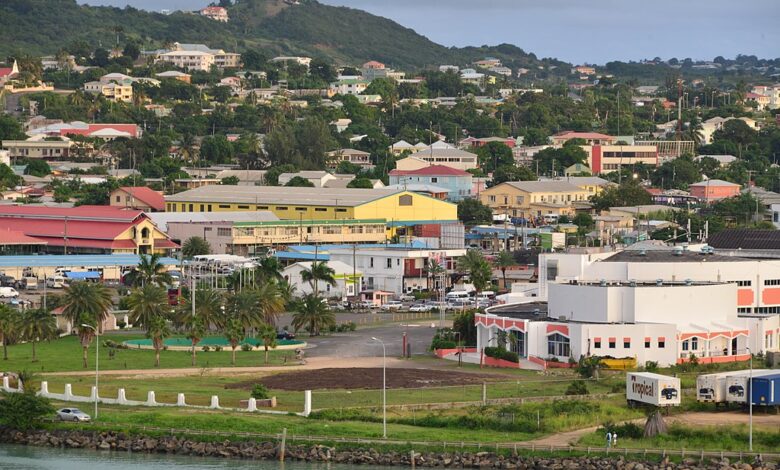St. John’s

St. John’s or Saint John’s is the capital city of Antigua and Barbuda which is part of the West Indies in the Caribbean Sea. It lies on the northwest coast of Antigua and is a resort community and the island’s main port (handling sugar, cotton, foodstuffs, machinery, and lumber). The port, in a sheltered harbour, accommodates ships drawing 35 feet (10.5 metres).
With a total area of 10 km2 (4 sq mi), its 2011 population estimate was about 22,219 inhabitants. St. John’s is the commercial centre of the nation and the chief port of the island of Antigua.
This city as the country’s capital city has the V. C. Bird International Airport and the Fort Road Heliport is located on Fort Road.
The climate
A tropical savanna climate (Koppen: Aw) is what is being experienced in this city with summer-like weather year-round, with hot days and warm nights. Rainfall is at its highest during the months of September to November due to hurricane activity. On 12 August 1995, a temperature of 34.9 °C (94.8 °F) was recorded, which was the highest temperature to have ever been recorded in Antigua and Barbuda.
The people
The majority of the population is of African descent. Most Antigua’s inhabitants live in St. John’s. The language is English, and some two-thirds of the people are Christian. The single largest denomination is Anglicanism. There are also large proportions of Seventh-day Adventists, Pentecostals, Moravians, and Methodists.
Culture
There are several museums, including the Museum of Antigua and Barbuda and the Museum of Marine Art, a small facility containing fossilised bedrock, volcanic stones, petrified wood, a collection of more than 10,000 shells, and artefacts from English shipwrecks.
Just east of St. John’s is the Sir Vivian Richards Stadium, a multi-use stadium in North Sound, that was created mostly for cricket matches, and hosted the matches during the 2007 Cricket World Cup. The Antigua Recreation Ground, Antigua and Barbuda’s national stadium, is located in St. John’s.
The economy of St. John’s
Agriculture, once the mainstay of the economy, has been largely supplanted by tourism. Sugarcane was long the dominant crop in Antigua, but its production is now insignificant. Barbuda was never involved in the sugar plantation system, its inhabitants always having been fishermen and subsistence farmers. Their traditional system of land tenure is threatened by tourism development. Fruits and vegetables, including citrus fruits, mangoes, and eggplants, are now cultivated on the islands. Manufacturing plays a small role in the economy; most activity involves processing agricultural products and making clothing and textiles and concrete blocks. An international airport is near St. John’s.
Education
Talking of education, St. John’s is home to two medical schools – the American University of Antigua and the University of Health Sciences Antigua. Secondary schools include Christ the King High School, Princess Margaret School and the Antigua Girls High School. Private grade schools include St. John’s Lutheran School of the WELS.